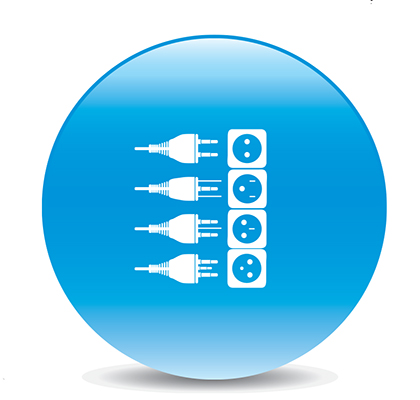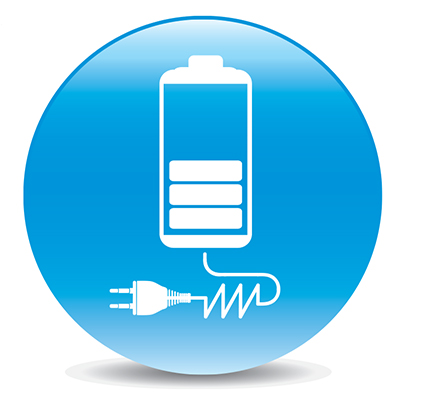Circuit Maker: Plug into Smarter Power and Lighting

PLUG INTO SMARTER POWER AND LIGHTING
It’s a sexy scenario: A dramatic lightning strike threatens to bring down power in a large warehouse, and an AV integrator with a networked, remote-monitored solution rides to the rescue.
Unfortunately, the reality is much less dramatic. Most experiences with post-installation power problems, some 80-percent, occur within a customer’s facility. “Lightning strike problems are rare occurrences,” said Dave Perrotta, vice president of operations and engineering at ESP/SurgeX. “There are more issues with pieces of equipment or with construction taking place.”
Citing a more commonplace scenario, he described a facility where consumer goods are tested and rated: “They had consistent problems and couldn’t figure out the source. We were able to look in remotely and pinpoint the problem. It was caused by a damaged transformer outside the building.”
Just the same, lightning strikes are catastrophic events, and even those strikes miles away can impact power grids. “When strikes occur periodically with storms, even if they’re not direct strikes, the customer sees error codes and we can look in and detect any patterns such as a pattern where power drops and lights flicker every day at certain times,” Perrotta noted. “And, we can recommend other devices such as UPSs or voltage regulators.”
Meanwhile the devices themselves are approaching lightning speed, growing smarter and smarter in terms of recording and diagnosing power problems.
“They are becoming self-contained expert systems that can warn you about a pattern of problems, along with other measurements such as ground wire going bad or supply voltage not being where it should be,” Perrotta noted.
A daily selection of the top stories for AV integrators, resellers and consultants. Sign up below.
Protect and Serve
Power is the most important element of a system, said John Benz, director of the power and accessories business segment at Core Brands. “At Furman, we may be coming from a biased perspective, but without power, electronics aren’t electronic anymore. They are just black boxes that take up space. Electronics systems are, by definition, wholly reliant on power to operate. It’s the lifeblood of a system.”
In recent years, however, the IP network has also emerged as a mission-critical element of a system. Like power, without a network, the system is no longer a system, he said. “If the elements of the system cannot communicate together, they cannot work together, and the system is now only a collection of discrete, independent parts.”
It stands to reason that coordinating these two critical elements would create greater benefits for the good of an integrated system, and, in reality, power and network management do go hand in hand for a number of reasons.

A common solution for a network issue, the hard reboot, can be performed automatically or remotely when a device falls off a network, Benz said. “While myriad circumstances may be the cause of the issue, such as IP address conflicts, interference on a wireless network, etc., a hard reboot of the endpoint device is a go-to fix no matter what instigated the problem.”
Today’s networked power management devices allow users to perform hard reboots from the cloud, and some can monitor IP addresses on the network and automatically reboot devices if there is a network disruption or lock up, with no intervention required. Additionally, periodic reboots of network equipment by scheduling power cycles with a networked power management device can improve network uptime and performance by clearing caches and refreshing network connections. Modems, routers, and switches can be hard-rebooted during off-use hours to keep the network healthy.
Old-school power management benefits of surge protection and AC filtering are especially relevant for devices on a network as digital equipment can be highly susceptible to disruption from even small power surges and AC line noise, Benz noted. “And battery backup (UPS solutions) can be utilized to keep a system online and accessible during a power outage; networked UPS’ can even trigger an email alert to notify a system administrator or other personnel when power has been lost at the site so they may take appropriate action.”
Gateway to Sales
The new crop of IP-enabled products can facilitate surge protection, UPS, and lighting sales opportunities for integrators, Perrotta said. “It makes power protection, which is a dumb product, smarter, since it can measure energy consumption and can send an alert in case of problems. A part of the entire package of services could be looking at usage and providing service for issues. Being able to do that gives the integrator one more way to service the user by performing diagnostics or rebooting without even rolling out the truck, and that’s a big deal.”

Providing added services through remote access, which offers flexibility and the opportunity to detect a problem before the customer does, is a smart move. “And selling monitoring services, with more capability to monitor, diagnose, and be proactive, is an added sell to a service contract,” he noted.
A natural addition to power protection devices, already attached to power lines, is energy management. Integrators can sell energy management solutions as another part of the power protection package. From a functional standpoint, AV and IT systems use a lot of power, even when they are in ‘idle’ states. Shutting these systems down during periods of non-use can generate substantial energy cost savings.
On the logistical side of things, controlling of lighting and power sequencing over IP on a network also makes it easier to track a system’s consumption. “It can be cumbersome to have individual devices for readings or to look at power quality issues,” Perrotta said. “It’s much more practical and has ease of use to be at a remote location or on a desktop to access all data in aggregate.”
Don’t neglect the importance to customers, and the sales opportunity, of benchmarking, he added. “This way, energy usage reporting can be streamlined to simplify a customer’s accountability, and integrators also can recommend more energy-efficient equipment based on that data. We’ve seen integrators kick out a competitor because they know a customers’ equipment uses excessive energy, and they can offer a sustainability program. It even comes down to shutting off at the plug level for devices such as copiers and vending machines.”
As an example, he pointed to a university installation where there are multiple conference rooms. “They may have the latest AV, and they don’t want anyone using the rooms to touch it. Leaving the AV on all the time uses a lot power, so they are set up throughout the campus with a solution that, through schedules, turns a rack on or off all day long. If someone unscheduled wants to use the room system, they simply call the facilities manager to activate.”
The convergence of power and network management solutions has provided a new generation of highly beneficial hardware and software options for systems integrators, Benz concluded. “While traditionally specifying power management into a system was akin to selling an insurance policy, today’s integrated components offer a variety of tangible monitoring, control, and automation benefits that promise to keep complex systems online and reliable with minimal disruption or servicing.”
Karen Mitchell is a freelance writer living in Boulder, CO.
